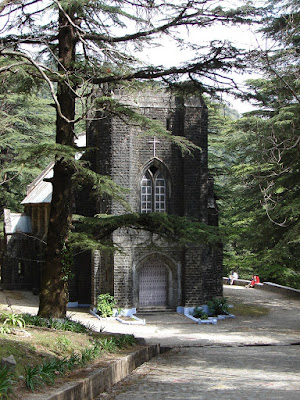Why Kanpur?
The New Delhi – Kanpur Shatabdi Express was late by some thirty minutes that day.
In the pre-winter of the previous year, I was in Kanpur for the very first time. This March I am here for the second time. The question that almost every other person had asked me, was for once by then, tickling my own consciousness too.
Why Kanpur?
Of all the places in and around Delhi, why does one choose Kanpur? On this long weekend while travel enthusiasts and backpackers were all set to leave for the mountains of Himachal Pradesh and Uttarakhand, why on this Earth was I traveling to Kanpur instead?
Besides the fact that all these years I have been attempting at establishing alternative ways of traveling and seeing, I too had no precise answer to the question. Nonetheless, I was sure this short trip to Kanpur shall in many ways be an attempt at answering this question. I was sure I would succeed in redefining travel and establishing the agency of the crowd and the cities, beyond the common trend of seeing mountains and solitude as the only definition of travel.
By the time the train was just close to Panki (a small station before Kanpur Central Railway Station acting at many times as the outpost to KCRS) people were already up from their seats. Looking out through the windows, almost everyone had a comment or two to make.
“Panki aa gaya, lagne waali hai Central pe” (Kanpur is next, we are at Panki)
“Agra waali nikal chuki hai” (The train for Agra must have left)
“Late ho gayi, ek pe nahi lagegi” (We are late, train won’t stop at platform 1)
As the train crawled further, many were attending phone calls, speculating mostly on the probable platform number on which the train shall stop. The Hindi that people talked was somewhat different from the Hindi that I am used to hearing in Delhi for past one decade.
The train finally stopped by the platform number 2 while people inside the train were still on, speculating now on the probable destination to which the train placed by the adjacent platform number 3 might be heading to.
“Ye Samparkranti hai, nau baje waali” (This is the 9:00 PM Samparkranti Express)
“Howrah waali lagi hai” (This is the train to Howrah)
Some were talking about something which I was not yet aware of and hence could not connect to.
“Underground se chalenge, underground se” (We shall go underground)
Although most of the chatter aboard seemed utterly senseless and unnecessary to me, I nevertheless was awed by the sheer curiosity of the Kanpurias. I was actually impressed by the engagement of the people on board with each detail, most of which was so minute that it bordered useless. It was interesting how they were conscious about which train was passing by, which platform the train would stop at and what not.
It was strange and interesting for me because talking about myself, I have never been bothered by which platform the train stops at and it has never been absolutely of any concern to me wherever the train passing by was heading to. For me, all that would have been of concern was to get down of the train and simply leave.
Perhaps this is what makes Kanpur and the Kanpurias different, and perhaps here begins the answer to a question that I too was stuck upon.
Collecting my belongings and waiting for the aisle to get clear of people, I thought to myself yet again, “why Kanpur”?
“Ama chal leo bhaai, bass jaoge kya”? (Move on bro, want to settle here or what)
A voice from behind with a pat on my back brought me to senses and I walked on to de-board the train.
The moment I stepped out of the train, I knew I had got an answer to some extent. On a lighter note, if for nothing else, one has to visit Kanpur because the Kanpur Central railway station has an underground subway to cross the rails. (Smiling!)
Throughout my travels across India (although very rarely by train), I hadn’t so far seen an underground subway to change platforms in any of the railway stations. Of all things, this basic architectural gesture shows up the hospitality of Kanpur. I remember the pain of crossing over from platform number 15 to platform number 16 on the Ajmeri Gate exit of the New Delhi Railway station some eight years ago. Escalators were not thought of for railway stations at that time and the only way was to climb the stairs and walk down the foot-over-bridge to the other side. At a time when pecuniary constraints made affording a porter a matter beyond possibility, I remember how much of a challenge it was for me on that summer day.
Providing a convenient pass without those knee-crunching stairs all the way up and down, the underpass seemed to me to be the epitome of Kanpur’s hospitality. As if someone unseen called me out "Aao ji, aapka swagat hai apno k sahar Kanpur mei".
Stretching its arms wide open, it seemed the underpass posed a warm welcome and injected a stream of curiosity about discovering the crowded city at the other end of the tunnel.
Keeping aside the crowd and spat around walls of the underpass the experience was wonderful. If not anything else, I by now knew what going underground (Underground se chalenge) meant when in Kanpur.
To be continued…
Come back for more stories from Kanpur





Comments
Post a Comment